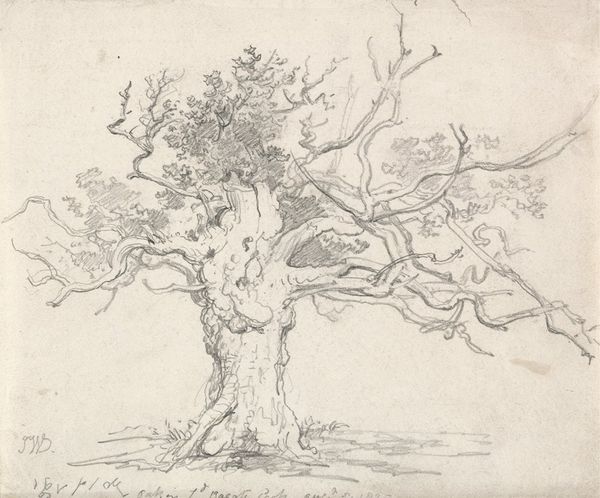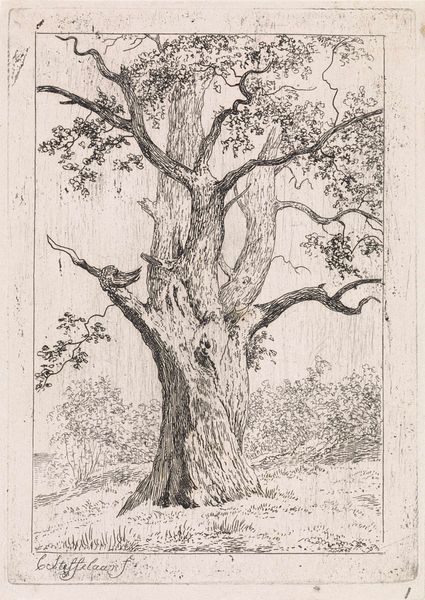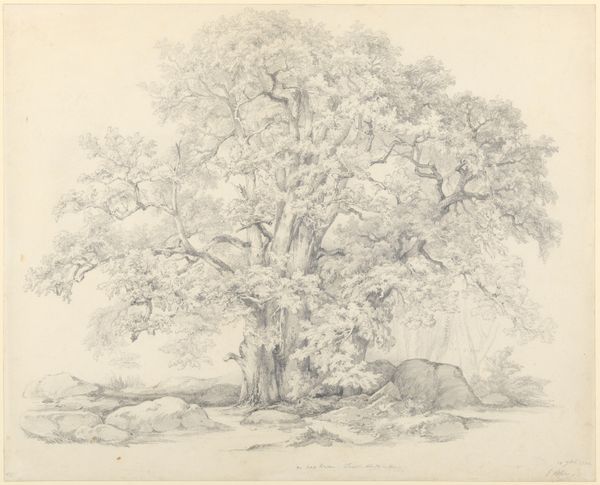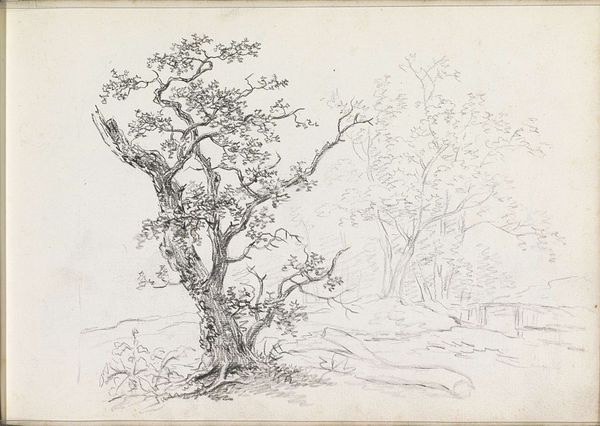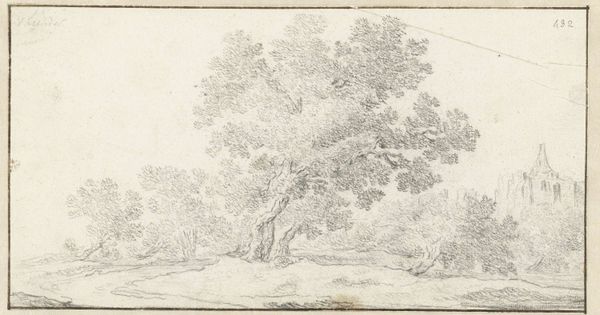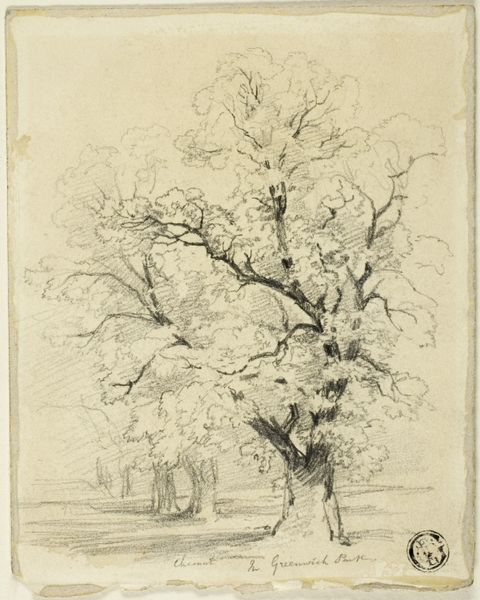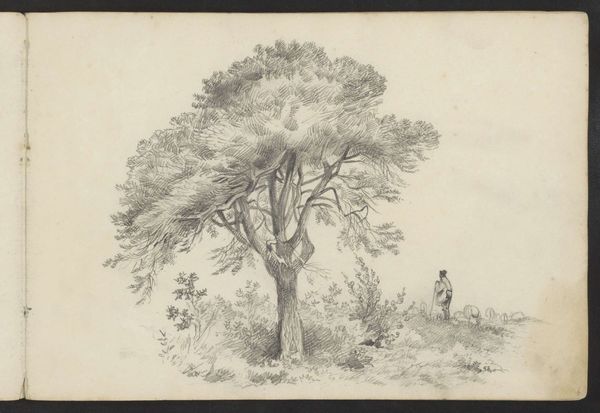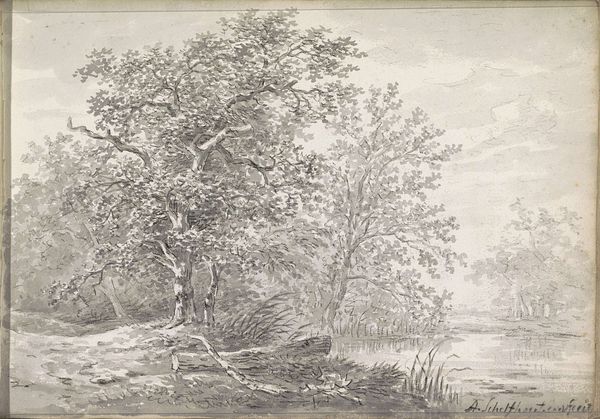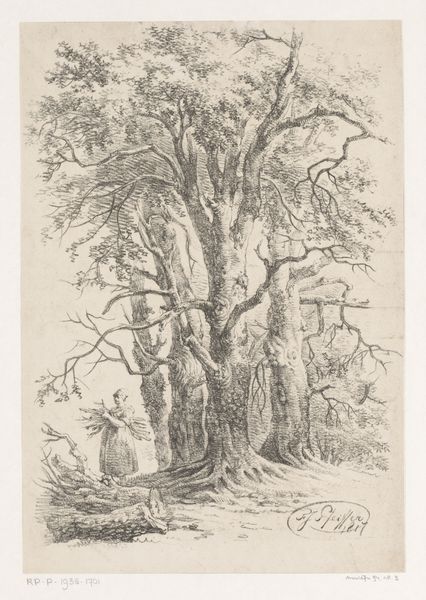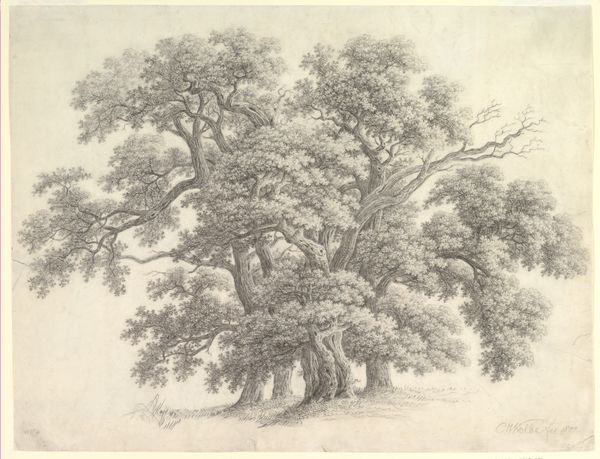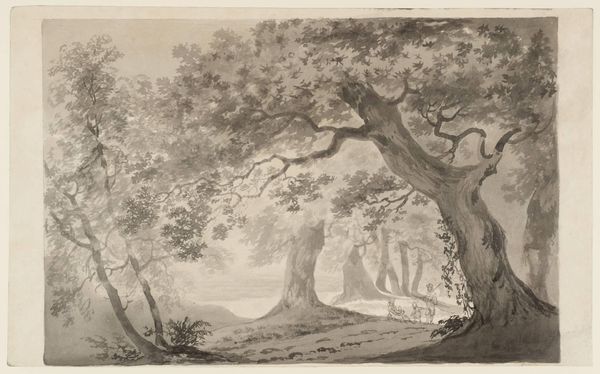
drawing, pencil
#
drawing
#
landscape
#
romanticism
#
pencil
#
realism
Copyright: Public Domain: Artvee
Editor: We're looking at James Ward's "Mr. Howard's Large Oak, August 5, 1820", a pencil drawing. It has a certain gentle quality to it; you can really see the structure of the tree even without much shading. What do you see when you look at this piece? Curator: Note the emphasis on line and form; Ward delineates the intricate network of branches with remarkable precision. It's fascinating to observe how he utilizes the medium of pencil to capture the textural nuances of the bark and foliage. Do you perceive a specific geometric organization underpinning the seemingly naturalistic representation? Editor: I guess I see how the branches almost create these circular shapes within the larger form of the tree. Curator: Precisely. Furthermore, examine the tonal values. The subtle gradations in shading, achieved solely through the manipulation of pencil strokes, construct a three-dimensional form out of a two-dimensional surface. Does this not strike you as an interesting demonstration of artistic skill? Editor: It definitely is! So, it's less about the "idea" of a tree and more about *how* Ward draws it, how he uses pencil? Curator: Yes, the essence of the work lies in the artist's formal decisions—the line, the tone, the composition, the geometry within a representational frame. Consider also the very texture of the paper; how does that impact our reading of the work? Editor: I hadn't thought of that! It does add another layer. I'm starting to notice things I wouldn't have seen before. Curator: And that is the value of close formal analysis: enhanced understanding and increased appreciation for the work before us.
Comments
No comments
Be the first to comment and join the conversation on the ultimate creative platform.
